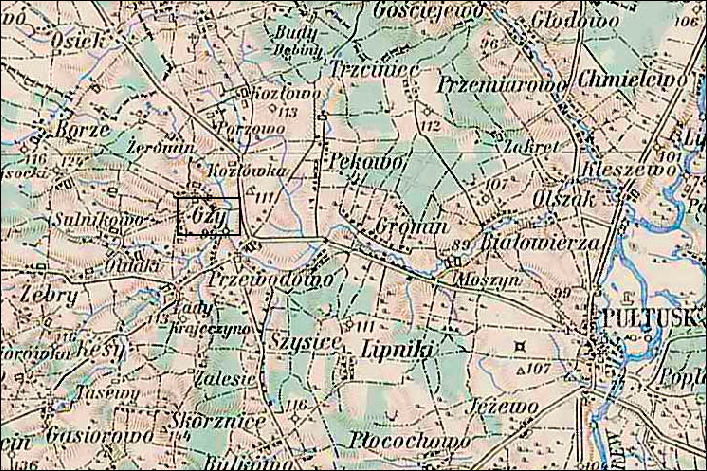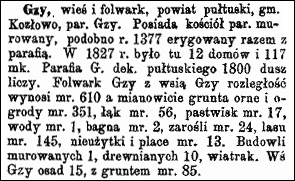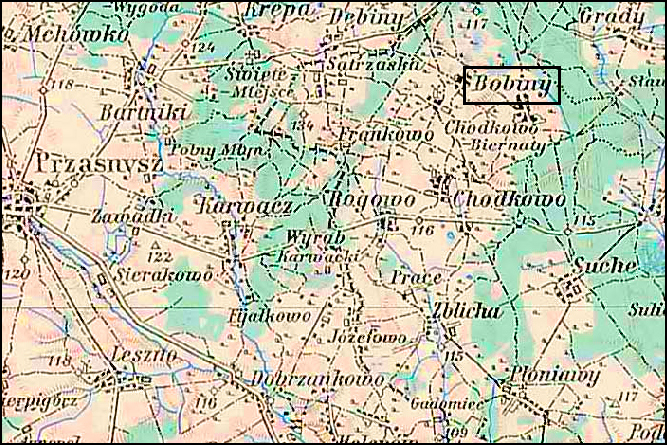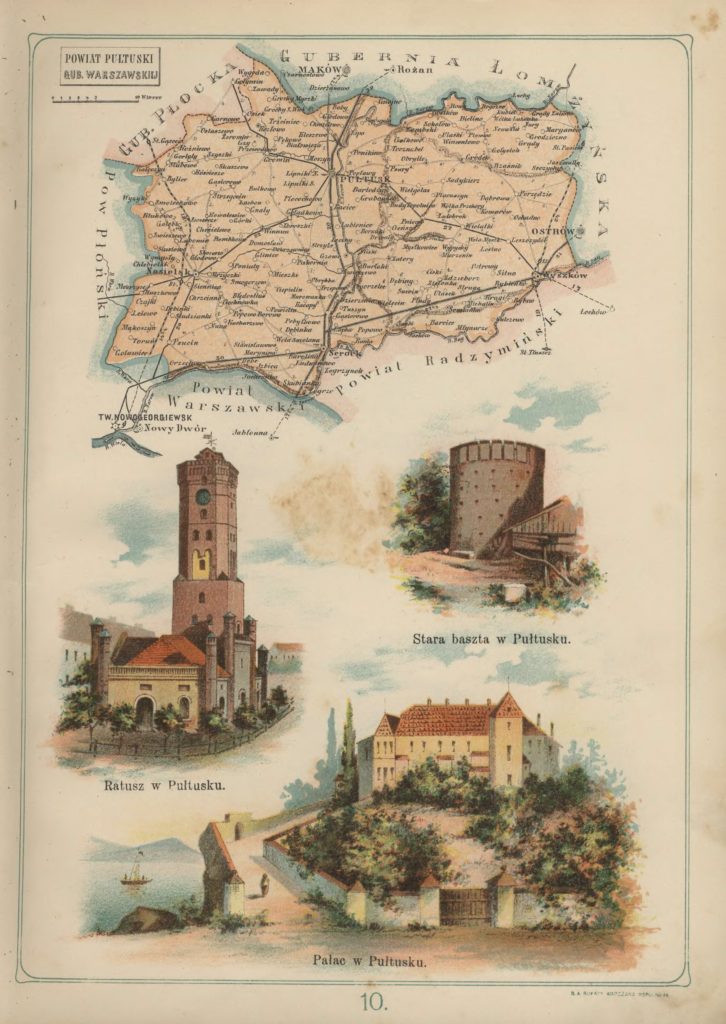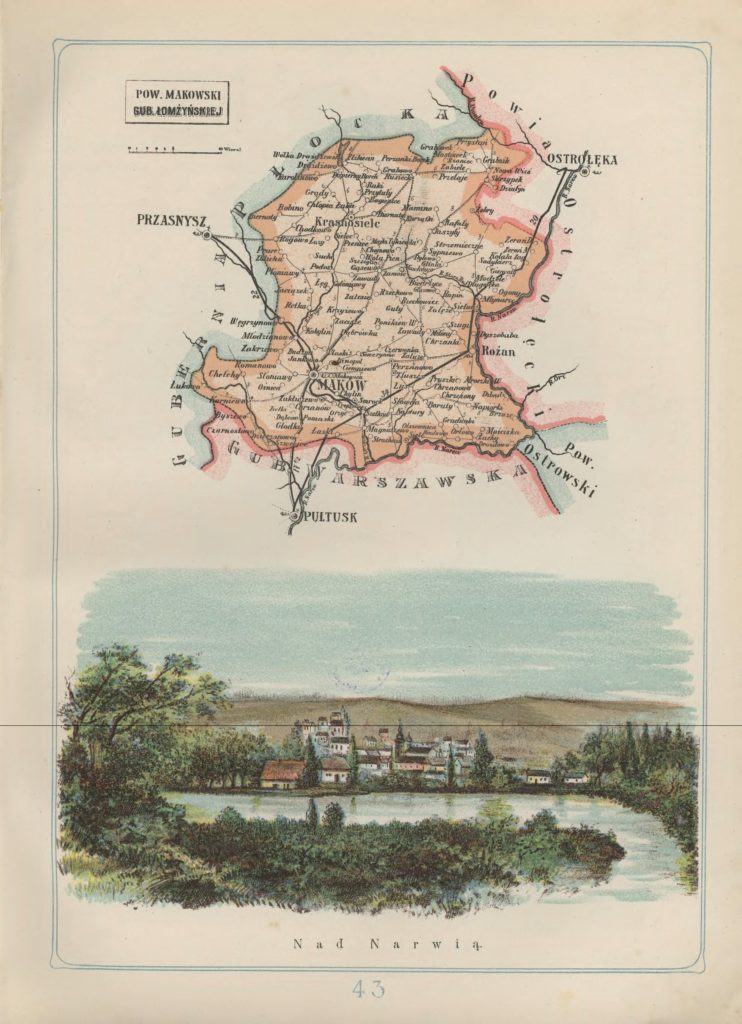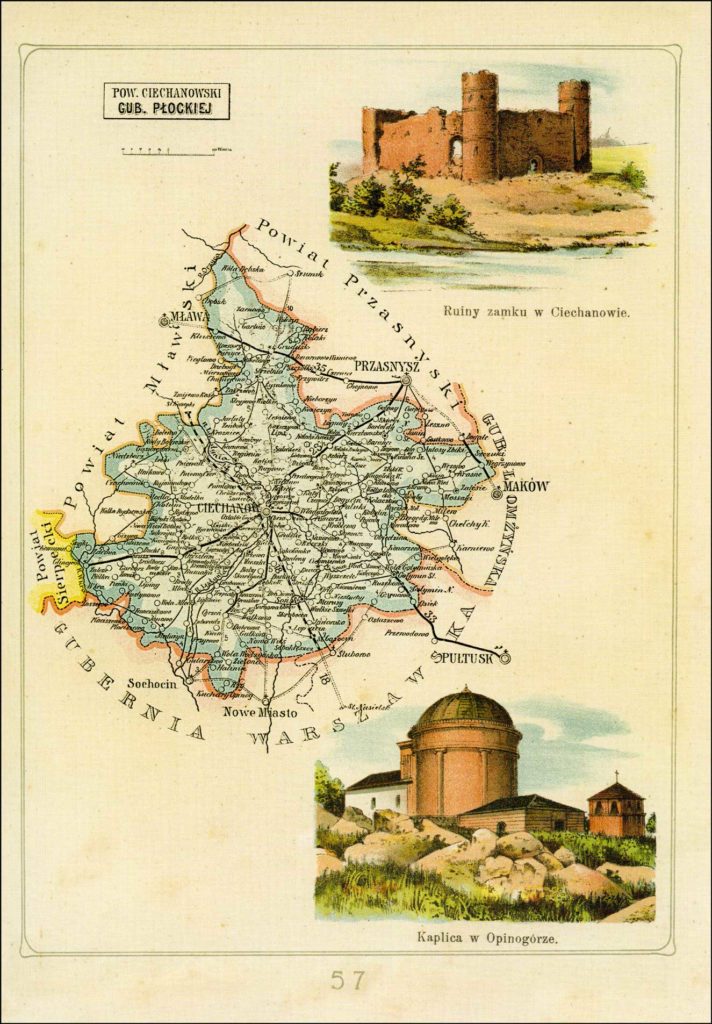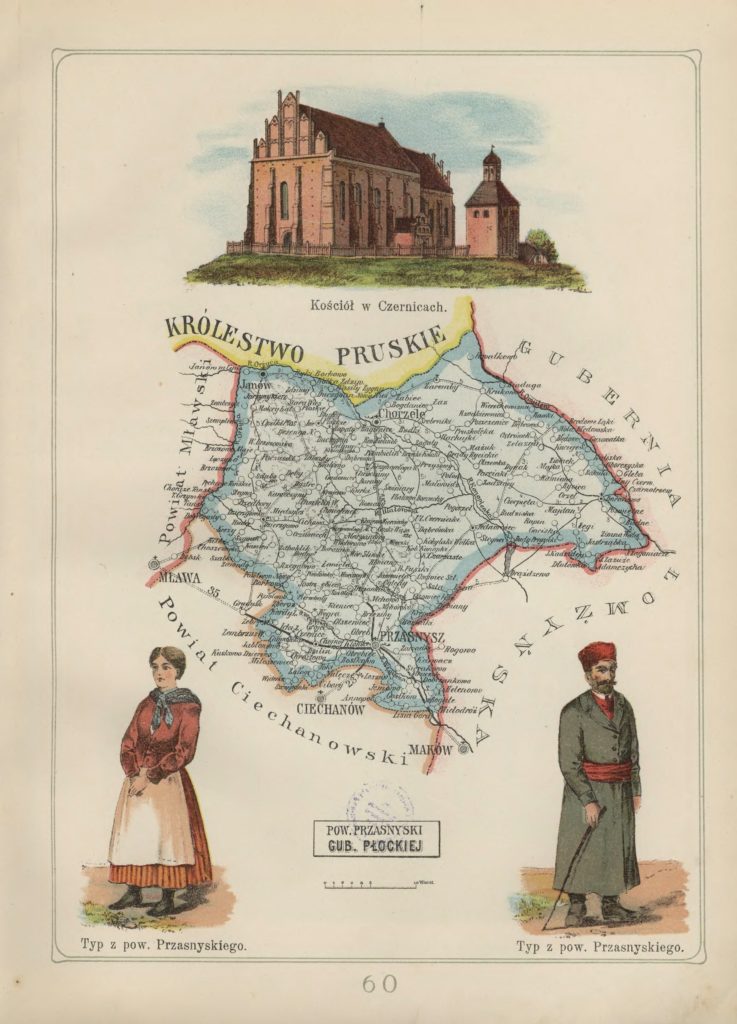When genealogists enter the names of the locations where events in their ancestors’ lives occurred, they are faced with the dilemma of how to enter place names so as to unambiguously identify the locations in both space and time.
On 22 January 1863, a spontaneous protest against mandatory conscription into the Russian army broke out in Poland. The Russian government bitterly suppressed this January Uprising, as it had the November Uprising which began on 29 November 1830. The aftermath of the January Uprising included complete incorporation of the Kingdom of Poland into the Russian Empire, where it was officially called the Vistula Land (Kraj Nadwiślański in Polish).
In 1867, the Polish language was replaced by Russian in official state business and education. Thus, after 1867, civil registration records were maintained in Russian rather than Polish. In reality, the exact date the language of the civil registration records changed from Polish to Russian differed from parish to parish. In fact, some parishes maintained the civil registration records in both languages for several years. Nonetheless, Polish civil registration records after 1867 were generally recorded in Russian.
The administrative structure of the country also changed considerably. The former Kingdom of Poland was divided into ten gubernias. In addition, the substructure of the gubernias was reorganized, so that the names and the borders of the powiats themselves changed.
In 1893, some territory from the Płock and Łomża Gubernias was transferred to the Warsaw Gubernia.
In 1912, some territory from the Lublin and Siedlce Gubernias was transferred to a newly formed Chełm Gubernia, and the Chełm Gubernia itself was moved from the Vistula Land to the Southwestern Land of the Russian Empire.
As of 1907, the gubernias and powiats in the Vistula Land were:
gubernia kaliska (Kalisz Gubernia)
powiat kaliski
powiat kolski
powiat konińskipowiat łęczycki
powiat sieradzki
powiat słupecki
powiat turecki
powiat wieluński
gubernia kielecka (Kielce Gubernia)
powiat jędrzejowski
powiat kielecki
powiat miechowski
powiat olkuski
powiat pińczowski
powiat stopnicki
powiat włoszczowski
gubernia łomżyńska (Łomża Gubernia)
powiat kolneński
powiat łomżyński
powiat makowskipowiat mazowiecki
powiat ostrołęcki
powiat ostrowski
powiat szczuczyński
gubernia lubelska (Lublin Gubernia)
powiat biłgorajski
powiat chełmski
powiat hrubieszowski
powiat janowski
powiat krasnostawski
powiat lubartowski
powiat lubelski
powiat nowo-aleksandryjski
powiat tomaszowski
powiat zamojski
gubernia piotrkowska (Piotrków Gubernia)
powiat będziński
powiat brzeziński
powiat częstochowski
powiat łaski
powiat łódzki
powiat nowo-radomski
powiat piotrkowski
powiat rawski
gubernia płocka (Płock Gubernia)
powiat ciechanowski
powiat rypiński
powiat lipnowksi
powiat mławski
powiat płocki
powiat przasnyski
powiat sierpecki
gubernia radomska (Radom Gubernia)
powiat iłżecki
powiat koński
powiat kozienicki
powiat opatowski
powiat opoczyński
powiat radomski
powiat sandomierski
gubernia siedlecka (Siedlce Gubernia)
powiat bialski
powiat garwoliński
powiat konstantynowski
powiat łukowski
powiat radzyński
powiat siedlecki
powiat sokołowski
powiat węgrowski
powiat włodawski
gubernia suwalska (Suwalki Gubernia)
powiat augustowskipowiat kalwaryjski
powiat maryampolski
powiat sejneński
powiat suwalski
powiat władysławowski
powiat wylkowyski
gubernia warszawska (Warsaw Gubernia)
powiat błoński
powiat gostyńskipowiat grójecki
powiat kutnowski
powiat łowicki
powiat nieszawski
powiat nowo-miński
powiat płoński
powiat pułtuski
powiat radzymiński
powiat skierniewicki
powiat sochaczewski
powiat warszawski
powiat włoclawski
Note that the above list includes the names of the gubernias in both Polish and English, but only the Polish names of the powiats are listed. The corresponding English name of the powiats may be generated by using the term “Powiat” followed by the name of place where the powiat seat is located. For example, powiat pułtuski is Pułtusk Powiat in English. Genealogists may specify a place name in the Vistula Land from 1867-1915 as follows:
name of city or village, powiat, gubernia, land, nation
for example:
Krasne, Ciechanów Powiat, Płock Gubernia, Vistula Land, Russian Empire
or, if one prefers to write the place name in Polish:
Krasne, powiat ciechanowski, gubernia płocka, kraj nadwiślański, imperium rosyjskiego
The names of most of the powiats and gubernias can be gleaned from the 1907 map of the Kingdom of Poland online at the website of the Polish Genealogical Society of America. Note that the pages of the website incorrectly call the major subdivisions województwa while the maps themselves correctly call the major subdivisions gubernii.
The 1907 General Map of the Kingdom of Poland is also available on this blog. The 1907 maps of several of the powiats are reproduced on this blog and are linked in the list above.
The advent of the Great War (World War I) would have great impact on Poland, as Austria and Germany attempted to create a puppet state, but eventually Poland reemerged as an independent nation.
Other articles in this series:
Describing Place Names in the Polish-Lithuanian Commonwealth 1569-1795
Describing Place Names in the Duchy of Warsaw 1807-1815
Describing Place Names in the Kingdom of Poland 1815-1816
Describing Place Names in the Kingdom of Poland 1816-1837
Describing Place Names in the Kingdom of Poland 1837-1844
Describing Place Names in the Kingdom of Poland 1844-1867
Copyright © 2010 by Stephen J. Danko

